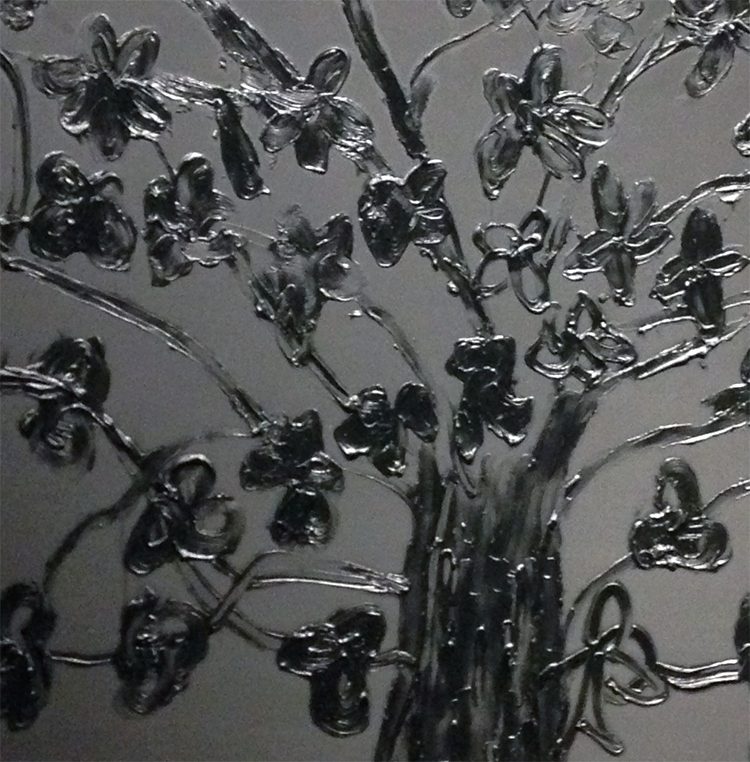
(left) Karel Appel, Magnolia of the Night, 1989. Oil on canvas, Private Collection (right) Vincent van Gogh, Almond Blossom, February 1890. Oil on canvas, 73.3 cm x 92.4 cm. Van Gogh Museum, Amsterdam (Vincent van Gogh Foundation)
I am completely taken with our Karel Appel: A Gesture of Color. I am so taken, in fact, that Liam Neeson showed up yesterday to rescue me.
I’m kidding, of course. But I did spend an inordinate amount of time standing in front of one painting in particular—Appel’s 1989 work, Magnolia of the Night. I was so enraptured that I ran to our museum shop to see if they had any prints of it. They did not, and rightfully so. The painting absolutely cannot be reproduced in a way that does justice to the original.
Magnolia of the Night stands in stark contrast to the rest of the exhibition. While most rooms burst with effervescent, distorted color schemes reminiscent of Alice’s Wonderland, the room that contains Magnolia represents Appel’s darker experiments. The painting hosts a black magnolia tree, at once innocent and ominous, visible only by the glint of oil against the black matte canvas. Like a flashlight shone into a fog, the outline of the blossoms shimmers, a veiled suggestion of the life and daylight that the tree would normally represent. While the other works in the exhibition seem to speak—no, yell—as you regard them, this one is stony silent.
It struck me so forcefully, however, for more than just its aesthetic value. It reminded me almost immediately of a painting that hangs in my bedroom at home, Vincent van Gogh’s Almond Blossom. It was given to me by my aunt, rather fittingly, as the work was originally a gift from van Gogh to his brother Theo upon the birth of his nephew. I love it because it is devoid of any nightmarish undertones, so common in much of van Gogh’s work, suggesting some gesture of guardianship and affection. As if van Gogh wanted to shield his nephew from the darkest themes of life, and introduce him instead to the most beautiful ones.
In light of these themes, these two works juxtapose each other wonderfully—so well, in fact, that I wonder if Appel was inspired by Almond Blossoms. Unfortunately, he is not around for us to ask, and he never spoke specifically about Magnolia that I can find. But I think he would appreciate what the inclusion of this piece in our exhibition represents—a greater focus on his affinity for experimentation, whereas some have made the mistake of categorizing his work too quickly. The dark is just as important as the light.
Kelsey Frenkiel, Intern with The University of Maryland Center for Art and Knowledge at The Phillips Collection

